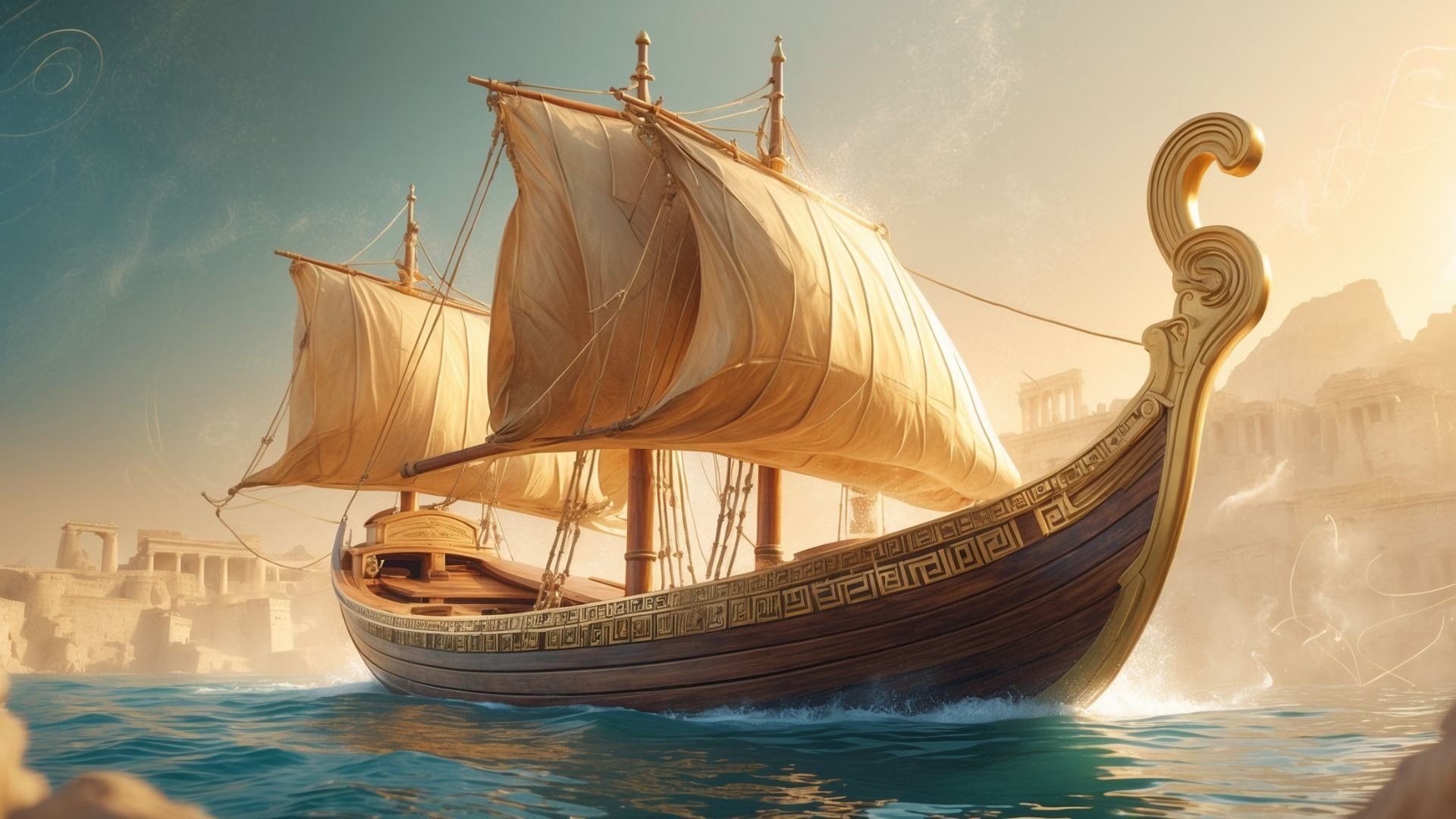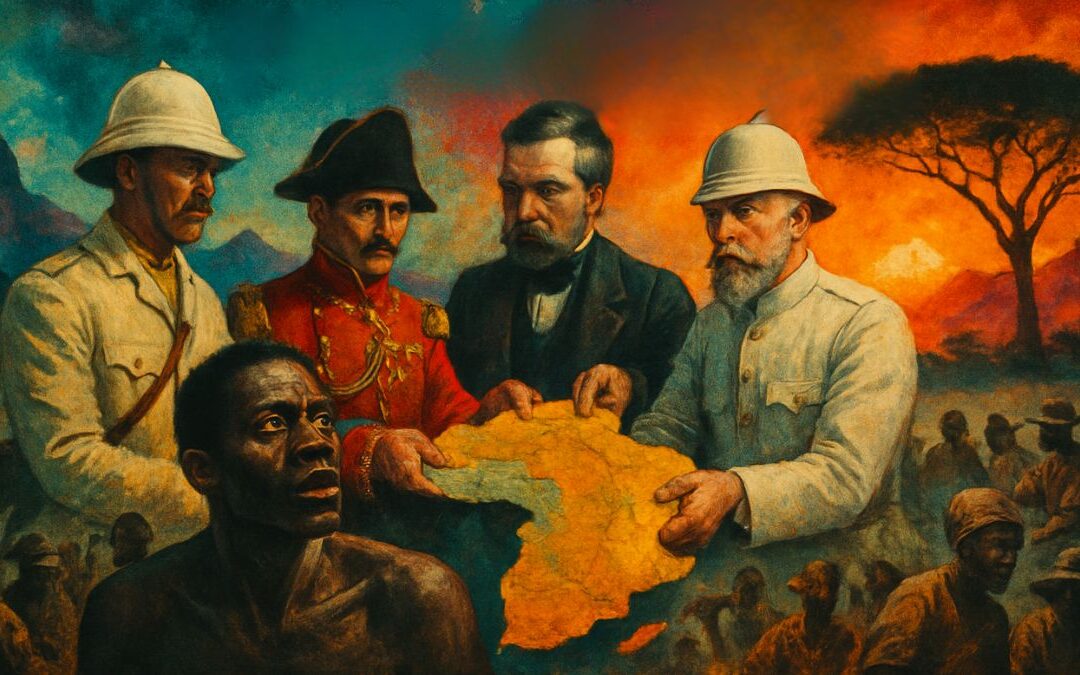- What is This Ship, and Who is Theseus Anyway?
- The Core of the Conundrum: Identity Through Change
- Is this fully restored vessel still the Ship of Theseus?
- Philosophical Lenses: Trying to See Clearly
- 1. Mereological Essentialism (The “Parts Make the Whole” View)
- 2. Spatiotemporal Continuity (The “Gradual Change is Okay” View)
- 3. The “Closest Continuer” Theory
- 4. Four-Dimensionalism (or Perdurantism – The “Spacetime Worm” View)
- 5. Identity as a Matter of Convention or Human Interest
- 6. Psychological Continuity (More for Persons, But…)
- Why Does This Ancient Puzzle Still Matter? Real-World Echoes
- The Enduring Power of a Paradox
- Let’s Learn Vocabulary in Context
- Let’s Discuss
- Learn with AI
- Let’s Play & Learn
Did you know that philosophy is home to some of the most perplexing and intriguing thought experiments ever devised? These aren’t just idle musings; they are tools that sharpen our critical thinking, challenge our deepest assumptions, and reveal the fascinating complexities hidden within seemingly simple concepts. One such enduring puzzle, which has furrowed the brows of thinkers for millennia, is the Ship of Theseus. It’s a paradox that sails right into the heart of profound questions about identity, persistence, and the very nature of what it means for something – or someone – to remain the “same” over time despite undergoing constant change. Prepare to have your notions of identity pleasantly capsized!
What is This Ship, and Who is Theseus Anyway?
Before we get to the philosophical heavy lifting, let’s meet our protagonist and his vessel. Theseus, in Greek mythology, was a legendary hero, the founder-king of Athens, famous for slaying the Minotaur in the Cretan labyrinth. The paradox is named after a ship he supposedly sailed.
The ancient Greek historian Plutarch, in his “Life of Theseus,” describes the scenario:
“The ship wherein Theseus and the youth of Athens returned had thirty oars, and was preserved by the Athenians down even to the time of Demetrius Phalereus, for they took away the old planks as they decayed, putting in new and stronger timber in their place, insomuch that this ship became a standing example among the philosophers, for the logical question3 of things that grow; one side holding that the ship remained the same, and the other contending that it was not the same.”
And there you have it – the birth of a philosophical conundrum that has kept the mental cogs turning for over two thousand years.
The Core of the Conundrum: Identity Through Change
The central question posed by the Ship of Theseus paradox is deceptively simple:
If an object has all of its component parts replaced over time, one by one, until none of the original parts remain, is it still the same object?
Imagine the Ship of Theseus docked in the Athenian harbor. Over the decades, perhaps centuries, as its wooden planks rot, its oars splinter, and its sails tatter, each worn-out part is meticulously replaced with a new, identical one. Eventually, a point is reached where not a single piece of the original ship remains.
Is this fully restored vessel still the Ship of Theseus?
Your gut might give you an immediate answer, but that’s where the fun begins. Let’s explore the arguments:
Argument for Sameness (“It’s Still Theseus’s Ship!”)
- Continuity of Form and Function: The ship maintains its overall structure, its design, its name, and its purpose. It still looks like Theseus’s ship, it still floats like Theseus’s ship (hopefully!), and it’s still identified by the Athenians as Theseus’s ship. There’s an unbroken historical connection and a continuity of existence.
- Gradual Change is Normal: Most things change gradually. Think about your own body: cells die and are replaced constantly. Are you not the same person you were a year ago, or seven years ago when (they say) most of your cells have been replaced? If gradual change negates identity, then nothing truly persists.
Argument Against Sameness (“It’s a New Ship!”)
- Composition Matters: An object is, in a fundamental sense, the sum of its parts. If all the parts are different, then the object itself must be different. The “stuff” it’s made of has been entirely swapped out.
- The Original is Gone: If you value the original material, the actual wood touched by Theseus, then that ship is gone, piece by piece. The current ship is a replica, albeit one built over a long period.
Twisting the Knot: The Second Ship Problem
As if the initial problem wasn’t tricky enough, philosopher Thomas Hobbes threw a spanner in the works (or perhaps an oar in the water) by adding another layer to the paradox:
What if, as each old plank was removed from the original Ship of Theseus, someone carefully collected all those discarded original planks and reassembled them into a second ship, perfectly matching the original design?
Now we have two ships:
- Ship A: The vessel in the harbor, which has had all its parts replaced with new timber but maintains a continuous history and location.
- Ship B: The vessel reassembled from all the original, discarded planks.
Which one, if either, is the true Ship of Theseus?
This complicates things magnificently:
- Ship A has the claim of spatiotemporal continuity and historical lineage.
- Ship B has the claim of being made of the original material components.
If you said Ship A was the Ship of Theseus in the first scenario, what do you say now that Ship B exists? If you say Ship B is the original, what does that make Ship A, which everyone had been calling the Ship of Theseus all along? Can there be two Ships of Theseus? The very notion seems to defy our understanding of identity – an object is usually considered to be identical only with itself. This is where the philosophical head-scratching becomes particularly acute.
Philosophical Lenses: Trying to See Clearly
Philosophers have proposed various ways to approach this vexing problem, each offering a different perspective on what constitutes identity over time (often called “persistence” or “diachronic identity”).
1. Mereological Essentialism (The “Parts Make the Whole” View)
This view suggests that an object is defined by its parts. If you change even one essential part, it’s no longer strictly the same object. In its most extreme form, any change in parts means a change in identity.
- On the Ship: For a strict mereological essentialist, the ship would cease to be the Ship of Theseus as soon as the first plank was replaced. Both Ship A and Ship B (if it even gets considered) would be new entities. This seems too rigid for most everyday intuitions.
2. Spatiotemporal Continuity (The “Gradual Change is Okay” View)
This is often the most intuitive answer for many. It argues that an object can maintain its identity as long as the changes are gradual and there’s a continuous path through space and time connecting its earlier and later stages. The object can survive the replacement of its parts, provided it doesn’t happen all at once or too drastically.
- On the Ship: Ship A would be the Ship of Theseus, as it has a continuous history of existence and gradual replacement. Ship B, having been disassembled and then reassembled, has a broken spatiotemporal path.
3. The “Closest Continuer” Theory
This theory suggests that an object X at a later time is identical to an object Y at an earlier time if X is Y’s “closest continuer.” This often aligns with spatiotemporal continuity. In the two-ship scenario, Ship A seems like a better candidate for the “continuer” of the original ship in the harbor. However, if Ship B (the reassembled one) is considered, it complicates which criteria for “closeness” (original matter vs. continuous existence) we prioritize.
4. Four-Dimensionalism (or Perdurantism – The “Spacetime Worm” View)
This mind-bending view proposes that objects are not just three-dimensional entities existing wholly at any given moment, but rather four-dimensional “spacetime worms” that extend through time. What we see as an object at a particular moment is just a temporal slice of this larger, four-dimensional object.
- On the Ship: Both Ship A and Ship B could be seen as distinct spacetime worms. The question then becomes about how we label these worms. One part of the original Ship of Theseus spacetime worm leads to the Ship A spacetime worm through part replacement. Another set of “object-stages” (the old planks) are later assembled to form the Ship B spacetime worm. They might share an origin but diverge. This view allows for more complex relationships than simple identity or non-identity. It’s a metaphysical heavy-hitter.
5. Identity as a Matter of Convention or Human Interest
Some philosophers argue that there isn’t a single, objectively “correct” answer. What we consider to be the “same” object might depend on our interests, language, and social conventions.
- On the Ship: For historical purposes or museum curation, Ship A might be considered the Ship of Theseus due to its continuous lineage and public identification. For someone interested in the original materials, Ship B might hold more claim. The answer might be context-dependent. This is a more pragmatic approach.
6. Psychological Continuity (More for Persons, But…)
For personal identity, John Locke famously proposed that identity resides in consciousness or memory (psychological continuity). While a ship doesn’t have consciousness, we can draw an analogy: perhaps the “identity” is tied to the ship’s historical record, its logbook, its established role, or the collective “memory” of the society that maintains it. This leans towards Ship A.
Why Does This Ancient Puzzle Still Matter? Real-World Echoes
The Ship of Theseus isn’t just an abstract philosophical game. Its echoes can be found in many real-world situations:
- The Human Body: Our bodies are constantly replacing cells. Over about seven years, virtually every atom in your body might be replaced. Are you the same person you were seven years ago? Most would say yes, relying on psychological continuity (memories, personality) and a continuous physical form. The Ship of Theseus makes us ponder what “sameness” means for us.
- Organizations and Institutions: A company, a sports team, or a nation might exist for centuries, yet all its original members are long gone, its buildings might have changed, even its core mission might have evolved. Is it still the “same” entity? Think of your favorite band with a changing lineup – at what point does it cease to be the band you originally loved?
- Software and Digital Information: A piece of software is constantly updated, with lines of old code replaced by new ones. A website undergoes complete redesigns. Is it the same software or website if its underlying code or structure is entirely new?
- Restoration and Art: When an ancient statue or painting is restored, with new materials filling in the gaps or replacing damaged sections, how much can be replaced before it loses its authenticity? This is a perennial question for conservators.
- Legal Identity: If a corporation undergoes a complete change in ownership, management, and business model but retains its legal name and registration, is it the same corporation for legal and financial purposes?
The Enduring Power of a Paradox
The Ship of Theseus paradox has no single, universally accepted solution, and that’s precisely why it remains so powerful and pertinent. It forces us to confront the ambiguity in our concepts of identity and persistence. It highlights that “sameness” isn’t always a straightforward, black-and-white issue.
It teaches us that:
- Change is constant: Almost everything is in a state of flux.
- Identity is complex: It might not be reducible to a single criterion like material composition or form.
- Context matters: Our reasons for asking “Is it the same?” can influence what we accept as an answer.
So, the next time you replace a part on your car, update your phone’s operating system, or even just reflect on your own personal growth and change over the years, you might find yourself thinking of a certain ancient Greek ship, perpetually sailing through the intriguing waters of philosophical inquiry. The Ship of Theseus invites us not necessarily to find a definitive answer, but to appreciate the depth and richness of the question itself – a true hallmark of enduring philosophy.
Let’s Learn Vocabulary in Context
Alright, after navigating the choppy waters of the Ship of Theseus paradox, let’s drop anchor and examine some of the key vocabulary terms we encountered. Understanding these words will not only help you grasp the philosophical nuances of the paradox but also enrich your everyday language, allowing you to articulate complex ideas with more precision.
First, we described the paradox as a conundrum. A conundrum is a confusing and difficult problem or question. It’s a type of puzzle, often one that seems to have no satisfactory answer or involves a paradox. The Ship of Theseus is a classic conundrum because it presents a situation with conflicting, yet seemingly plausible, outcomes regarding the ship’s identity. You might say, “How to solve the city’s traffic problem is a real conundrum for the planners.”
The problem becomes particularly acute when the second ship, made of old parts, is introduced. Acute in this context means sharp, severe, or intense. It can also mean showing a perceptive understanding or insight. When a problem becomes acute, it becomes more pressing and difficult to ignore or resolve. The addition of the second ship makes the identity question more sharply defined and challenging. Think of “acute pain” – it’s sharp and severe. Similarly, an “acute observation” is a very keen and insightful one.
We referred to the Ship of Theseus as a vexing problem. If something is vexing, it causes worry, frustration, or annoyance; it’s puzzling or difficult to deal with. The paradox is vexing because it resists easy solutions and can leave you feeling mentally tangled. “The constant delays were incredibly vexing to the commuters.”
We also touched upon metaphysical views like four-dimensionalism. Metaphysical relates to metaphysics, which is the branch of philosophy that deals with the fundamental nature of reality, existence, and knowledge. It explores abstract concepts such as being, knowing, substance, cause, identity, time, and space. Questions about what makes an object the “same” object over time are classic metaphysical inquiries. It sounds a bit grand, but metaphysical questions are often at the root of how we understand the world. “The question of free will is a deep metaphysical debate.”
A more pragmatic approach to the paradox suggests that identity might be a matter of convention. Pragmatic means dealing with things sensibly and realistically in a way that is based on practical rather than theoretical considerations. A pragmatic person is focused on what works in practice. So, a pragmatic solution to the Ship of Theseus might be to say, “Let’s just agree to call Ship A the Ship of Theseus for practical, historical reasons, and acknowledge Ship B is an interesting replica.” “She took a pragmatic approach to managing her finances, focusing on saving rather than risky investments.”
The question of restoring art was called a perennial one for conservators. Perennial means lasting or existing for a long or apparently infinite time; enduring or continually recurring. A perennial issue is one that keeps coming up year after year, or generation after generation, often because it’s difficult to resolve. The Ship of Theseus itself is a perennial philosophical problem. “Funding for the arts is a perennial issue in government budgets.”
The Ship of Theseus paradox is also described as pertinent. If something is pertinent, it means it is relevant or applicable to a particular matter; apposite. The paradox is pertinent today because the questions it raises about identity and change are still relevant to many modern situations, from our own bodies to technology. “Please ensure your comments are pertinent to the topic under discussion.”
We mentioned spatiotemporal continuity. This might seem like a mouthful, but it’s quite logical. Spatiotemporal combines “spatial” (relating to space) and “temporal” (relating to time). So, spatiotemporal continuity refers to an unbroken existence through space and time. The idea is that an object remains the same if it traces a continuous path from one point in space and time to another. “The detective tried to reconstruct the spatiotemporal path of the suspect on the night of the crime.”
The word intuitions was used when discussing how mereological essentialism seems too rigid for most everyday intuitions. Intuitions are the ability to understand something instinctively, without the need for conscious reasoning; an immediate understanding or insight. Our everyday intuitions about identity usually allow for some change in parts without an object losing its identity. “My intuition told me that he wasn’t being entirely honest.”
Finally, the article states that Theseus was famous for slaying the Minotaur. While specific to the myth, knowing what a Minotaur is adds color. In Greek mythology, the Minotaur was a creature with the head of a bull and the body of a man, or, as described by Roman poet Ovid, “part man and part bull.” He dwelt at the center of the Labyrinth. It’s a classic monster from mythology. “The hero ventured into the labyrinth to confront the fierce Minotaur.”
These terms can help you navigate not just philosophical discussions but also many other academic and real-world conversations. They allow for nuanced expression and a deeper understanding of complex topics.
Vocabulary Quiz
Let’s Discuss
Here are five discussion questions to delve deeper into the Ship of Theseus paradox and its implications:
- Personal Identity: How does the Ship of Theseus paradox make you think about your own personal identity over time? You’ve changed physically (cells replaced, appearance altered) and mentally (new memories, beliefs, personality shifts). What makes you “you” despite these changes?
- Explore the role of memory, consciousness, personality traits, physical continuity, relationships, and even your name or social security number. Which criteria feel most important for your sense of self? Does the paradox make you question the stability of personal identity?
- The “Two Ships” Problem in Real Life: Can you think of real-world scenarios that mirror Hobbes’s addition of the second ship (rebuilt from original parts)? For example, if a historic building is disassembled and rebuilt elsewhere with new materials, while its original materials are used to reconstruct it on the original site, which is the “authentic” building?
- Consider heritage conservation, brand identity (e.g., a company splits, and both new entities claim the original legacy), or even digital data (an original file vs. a perfectly restored backup after the original is corrupted and then fixed). What factors influence our judgment in these cases?
- Value and Authenticity: Does an object (like the Ship of Theseus, a restored artwork, or a vintage car with replaced parts) lose its value or authenticity if its original components are replaced? Does it depend on what kind of value we’re talking about (historical, monetary, sentimental, functional)?
- Compare a Stradivarius violin that has had parts replaced for playability versus one kept entirely original but unplayable. Discuss the concept of “original intent” versus “living history.” Is authenticity tied more to material substance or to continuous function and narrative?
- When Does Change Become Transformation? The paradox hinges on gradual replacement. Is there a “tipping point” at which an object with replaced parts definitively ceases to be the original and becomes something new? If so, who decides, and based on what criteria? Or is it always a fuzzy boundary?
- Think about the “sorites paradox” (paradox of the heap – when does a collection of sand grains become a heap?). Is it a matter of percentage of parts replaced? Or is it more about a qualitative change in essence or function? Can an object transform yet retain its identity?
- Practical vs. Philosophical Solutions: The article mentions pragmatic approaches (identity by convention). How satisfying are such practical solutions to you when faced with a deep philosophical puzzle like this? Is it okay to say “it depends on the context,” or should philosophy strive for more definitive, universal answers about identity?
- Explore the purpose of philosophy – is it to solve puzzles definitively or to clarify our thinking and expose underlying assumptions? Can a problem be philosophically perplexing but practically straightforward, or vice-versa? Does the “right” answer matter as much as the process of exploring the question?
Learn with AI
Disclaimer:
Because we believe in the importance of using AI and all other technological advances in our learning journey, we have decided to add a section called Learn with AI to add yet another perspective to our learning and see if we can learn a thing or two from AI. We mainly use Open AI, but sometimes we try other models as well. We asked AI to read what we said so far about this topic and tell us, as an expert, about other things or perspectives we might have missed and this is what we got in response.
Greetings! The Ship of Theseus is indeed a classic, and for good reason – it pokes at some of our most fundamental intuitions about what makes something, well, itself over time. The article did an excellent job laying out the core problem and many of the standard philosophical responses. Let me perhaps add a few nuances that often come up in deeper dives.
One aspect that modern philosophy often grapples with is the problem of vagueness. When exactly does the ship cease to be the Ship of Theseus as its planks are replaced? After the first plank? The 50th? The last one? There doesn’t seem to be a sharp cut-off point. This suggests that our concept of “being the Ship of Theseus” might be a vague predicate. Some philosophers try to develop logics of vagueness to handle such cases, suggesting there might be borderline cases where it’s indeterminate whether the ship is still the same. This doesn’t “solve” the paradox in a traditional sense, but it reframes it as a problem stemming from the nature of our concepts and language.
Another interesting angle is to consider the intentions and functions associated with the object. For instance, if the Athenians intend for the ship in the harbor (Ship A) to be the continuously existing memorial to Theseus, and they treat it as such, performing rituals or maintaining its historical record, does this “social construction” of identity play a decisive role, regardless of material composition? This ties into the conventionalist idea but emphasizes the active role of human practices in bestowing identity. What if its function as a museum piece is preserved in Ship A, even if Ship B has the original bits? Which function or intention do we prioritize?
The paradox also highlights the tension between qualitative identity (being exactly similar) and numerical identity (being one and the same object). Ship A, after all planks are replaced, might be qualitatively identical to the original (same design, same appearance). Ship B is made of the same matter. The question is about numerical identity: is Ship A (or B) the very same ship that Theseus sailed? Our intuitions about how qualitative and numerical identity relate, especially through change, are precisely what the paradox tests.
Furthermore, the way we treat artifacts versus natural kinds often differs. We might have different intuitions about the identity of a ship (an artifact designed and built by humans) compared to, say, a river that constantly changes its water molecules, or an organism that replaces its cells. With artifacts, the designer’s intent or the purpose it serves might seem more central to its identity than for a purely natural object.
Finally, the paradox beautifully illustrates the limits of our everyday conceptual scheme when pushed to extremes. Our concepts of “ship,” “same,” and “part” work perfectly well for most practical purposes. But thought experiments like the Ship of Theseus expose the fuzzy edges and internal tensions within these concepts. They don’t necessarily mean our concepts are “wrong,” but rather that they might not be equipped to handle every conceivable scenario with absolute precision. And that, in itself, is a valuable insight into how we make sense of a constantly changing world. It keeps us humble about the neatness of our categories!










0 Comments